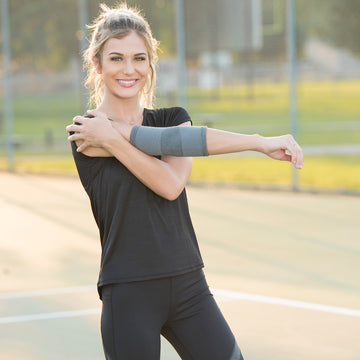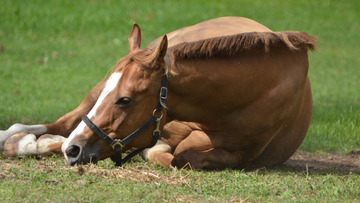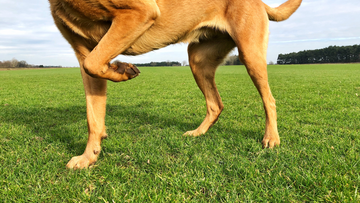Why do horses have the stamina to run for extended periods?
Horses can accommodate great oxygen demands with a specialized circulatory and respiratory system. This means they can provide the oxygen their muscles need during exercise. While the respiratory system transports oxygen, the equine circulatory system is a bit more complex. It transports blood through the heart, arteries, veins, and capillaries.
The Role of the Circulatory System
 The heart and spleen are the two major organs in the equine circulatory system. These organs connect to vessels that deliver oxygen and nutrients and remove cellular waste throughout the body. We will dive into the specific function of each area of the circulatory system so you can better understand how this impacts your horse’s health.
The heart and spleen are the two major organs in the equine circulatory system. These organs connect to vessels that deliver oxygen and nutrients and remove cellular waste throughout the body. We will dive into the specific function of each area of the circulatory system so you can better understand how this impacts your horse’s health.
The Equine Circulatory System
Your horse’s circulatory system consists of the heart, spleen, blood, blood vessels, and the frog.
Heart
The heart is a massive muscle that pumps blood throughout the body. A horse heart has four chambers: left atrium, right atrium, left ventricle, and right ventricle. Oxygenated blood enters the heart and is pumped to the other organs, while deoxygenated blood returns and is pumped to the lungs, where it is reoxygenated.
Blood
Blood has several components: white blood cells, red blood cells, and plasma. White blood cells are involved with the immune system and respond to potential infections. Red blood cells are oxygen transporters. In addition to oxygen, blood transports nutrients and hormones and cools a horse down.
Blood Vessels
If blood is the transporter, think of blood vessels as the highways throughout the body. Blood travels through blood vessels to different organs and tissues. Arteries and veins are both blood vessels.
Spleen
The spleen is the gatekeeper for red blood cells. It removes damaged red blood cells and releases new red blood cells when needed. These new red blood cells allow horses to use more oxygen more efficiently, which helps with their stamina.
Frog
The frog in your horse’s hoof is part of the equine circulatory system. Every time your horse puts pressure on a hoof, the blood in the limbs is pushed back up into the horse’s body. Think of it like a natural blood circulator!
How to Determine Your Horse’s Heart Rate
There are several ways to check your horse’s heart rate. We recommend practicing each method to determine which you are most comfortable with before an emergency.
- Under the jaw - place two fingers under their jaw and count the number of beats in 15 seconds, then multiply by 4 to get the beats per minute rate.
- Digital Pulse - place your finger on the outside of the leg slightly lower than the fetlock joint. Feel for a cord-like bundle and apply slight pressure. In a healthy horse, it can be challenging to feel a digital pulse.
- Stethoscope - place a stethoscope on the belly just behind the front leg.
What should my horse's pulse be?
An average adult horse will have a heart rate of 28-40 beats per minute when resting. Newborn foals will have a heart rate between 80-120, older foals between 60-80, and yearlings between 40-60. Keep in mind these are resting rates. Your horse’s heart rate will be higher during and right after exercise.
How to Support Your Horse’s Circulation
 If your horse needs additional support, herbs such as nettle and turmeric help boost the circulatory system. Alternatively, the Benefab Rejuvenate SmartScrim harmonizes bodily functions naturally and promotes blood circulation and oxygen flow, along with many other benefits.
If your horse needs additional support, herbs such as nettle and turmeric help boost the circulatory system. Alternatively, the Benefab Rejuvenate SmartScrim harmonizes bodily functions naturally and promotes blood circulation and oxygen flow, along with many other benefits.






















